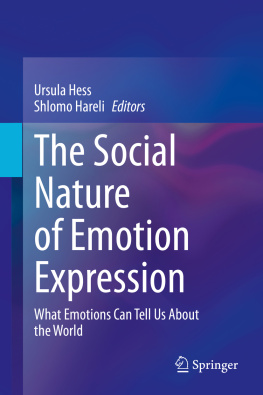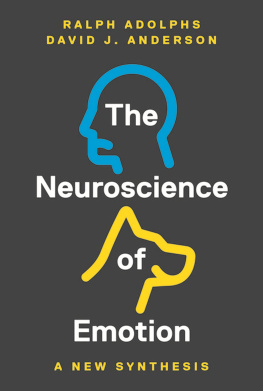Volume 1378
Advances in Experimental Medicine and Biology
Series Editors
Wim E. Crusio
Institut de Neurosciences Cognitives et Intgratives dAquitaine, CNRS and University of Bordeaux, Pessac Cedex, France
Haidong Dong
Departments of Urology and Immunology, Mayo Clinic, Rochester, MN, USA
Heinfried H. Radeke
Institute of Pharmacology & Toxicology, Clinic of the Goethe University Frankfurt Main, Frankfurt am Main, Hessen, Germany
Nima Rezaei
Research Center for Immunodeficiencies, Childrens Medical Center, Tehran University of Medical Sciences, Tehran, Iran
Ortrud Steinlein
Institute of Human Genetics, LMU University Hospital, Munich, Germany
Junjie Xiao
Cardiac Regeneration and Ageing Lab, Institute of Cardiovascular Science, School of Life Science, Shanghai University, Shanghai, China
Advances in Experimental Medicine and Biology provides a platform for scientific contributions in the main disciplines of the biomedicine and the life sciences. This series publishes thematic volumes on contemporary research in the areas of microbiology, immunology, neurosciences, biochemistry, biomedical engineering, genetics, physiology, and cancer research. Covering emerging topics and techniques in basic and clinical science, it brings together clinicians and researchers from various fields.
Advances in Experimental Medicine and Biology has been publishing exceptional works in the field for over 40 years, and is indexed in SCOPUS, Medline (PubMed), EMBASE, BIOSIS, Reaxys, EMBiology, the Chemical Abstracts Service (CAS), and Pathway Studio.
2021 Impact Factor: 3.650 (no longer indexed in SCIE as of 2022)
Editors
Michael Adamaszek
Department of Clinical and Cognitive Neurorehabilitation, Klinik Bavaria Kreischa, Kreischa, Germany
Mario Manto
Service de Neurologie et Service des Neurosciences, CHU-Charleroi - University of Mons, Mons, Belgium
Dennis J. L. G. Schutter
Experimental Psychology, Helmholtz Institute, Utrecht University, Utrecht, The Netherlands
ISSN 0065-2598 e-ISSN 2214-8019
Advances in Experimental Medicine and Biology
ISBN 978-3-030-99549-2 e-ISBN 978-3-030-99550-8
https://doi.org/10.1007/978-3-030-99550-8
The Editor(s) (if applicable) and The Author(s), under exclusive license to Springer Nature Switzerland AG 2022
This work is subject to copyright. All rights are solely and exclusively licensed by the Publisher, whether the whole or part of the material is concerned, specifically the rights of translation, reprinting, reuse of illustrations, recitation, broadcasting, reproduction on microfilms or in any other physical way, and transmission or information storage and retrieval, electronic adaptation, computer software, or by similar or dissimilar methodology now known or hereafter developed.
The use of general descriptive names, registered names, trademarks, service marks, etc. in this publication does not imply, even in the absence of a specific statement, that such names are exempt from the relevant protective laws and regulations and therefore free for general use.
The publisher, the authors, and the editors are safe to assume that the advice and information in this book are believed to be true and accurate at the date of publication. Neither the publisher nor the authors or the editors give a warranty, expressed or implied, with respect to the material contained herein or for any errors or omissions that may have been made. The publisher remains neutral with regard to jurisdictional claims in published maps and institutional affiliations.
This Springer imprint is published by the registered company Springer Nature Switzerland AG
The registered company address is: Gewerbestrasse 11, 6330 Cham, Switzerland
Hummingbirds. Colour-coded tract-density images generated from 0.8 mm diffusion-weighted MRI in a single healthy participant. Sagittal slices include depictions of fibres in the brainstem (coloured blue, running infer/superior), pons (red, medial/lateral), and cerebellumwith the superior cerebellar peduncle in green traversing from the cerebellum into the brainstem. 2021, Christopher J. Steele, Concordia University, Montreal, Quebec, Canada
Foreword
Homo sapiens
Cerebellum research is at a point where the close ties between the social-emotional cerebellum and the evolutionary rise of Homo sapiens can begin to be revealed. This idea is strongly supported by the detailed and verifiable paleontological analysis of the progression of socially, emotionally intense stone-tool making and the resultant capacities of the social-emotional cerebellum. These capacities drive uniquely human cumulative culture, the accumulated elaborations of culture we all share. The relatively new discipline of neuroanthropology (the study of the relationships between the brain and cumulative culture) proposes that the progressive evolution of stone-tool making was largely behind the evolution of Homo sapiens. This paleontological story can suggest that it is the social and emotional prediction capacity of the cerebellum that is to a very great extent behind the sapience we see in the astounding mental and technological elaborations of cumulative culture.
Linnaeus (1758) with limited knowledge of the brain in his time could only roughly refer to our species, with its great accumulation of culture, as Homo sapiens. However, the collective significance of the chapters of this book provides evidence that strongly supports the idea that the emotional, cognitive, and social functions of the cerebellum can be said to be the fundamental key behind our unique human ability to constantly move toward an optimized cumulative culture. With the tremendous advances in just how the cerebellum contributes to the rise of our cumulative culture consisting of everything from art, music, language, and mathematics to technology that mimics the mind (computers), perhaps it is time to embrace the massive contributions of the cerebellum as Linnaeus might have if he had known what cerebellum research and the authors of this book have providedmight he have understood that the cerebellum plays many key roles in our understanding of the meaning of the sapience of Homo sapiens?
To stress the important, undeniable relevance of neuroanthropology to the chapters in this book, an example of how learning stone-tool making critically involved social and emotional prediction and control by cerebellar internal models for approximately 2. 6 million years (1.7 million years for advanced stone tools) of adaptive selection is presented. Neuroanthropologists Stout and Hechts (2017) careful and detailed study of the extended repetitive practice necessary to stone-tool making is quoted at length so as to make its processes clear to a broad audience of both old and new to cerebellum research. Stout and Hecht refer to stone-tool making as high fidelity (imitative) social learning. As an example of this high fidelity social learning they describe how it takes place during the interaction between the learner and the teacherthat is, as we now know, how this interaction is modeled in the cerebellum:












